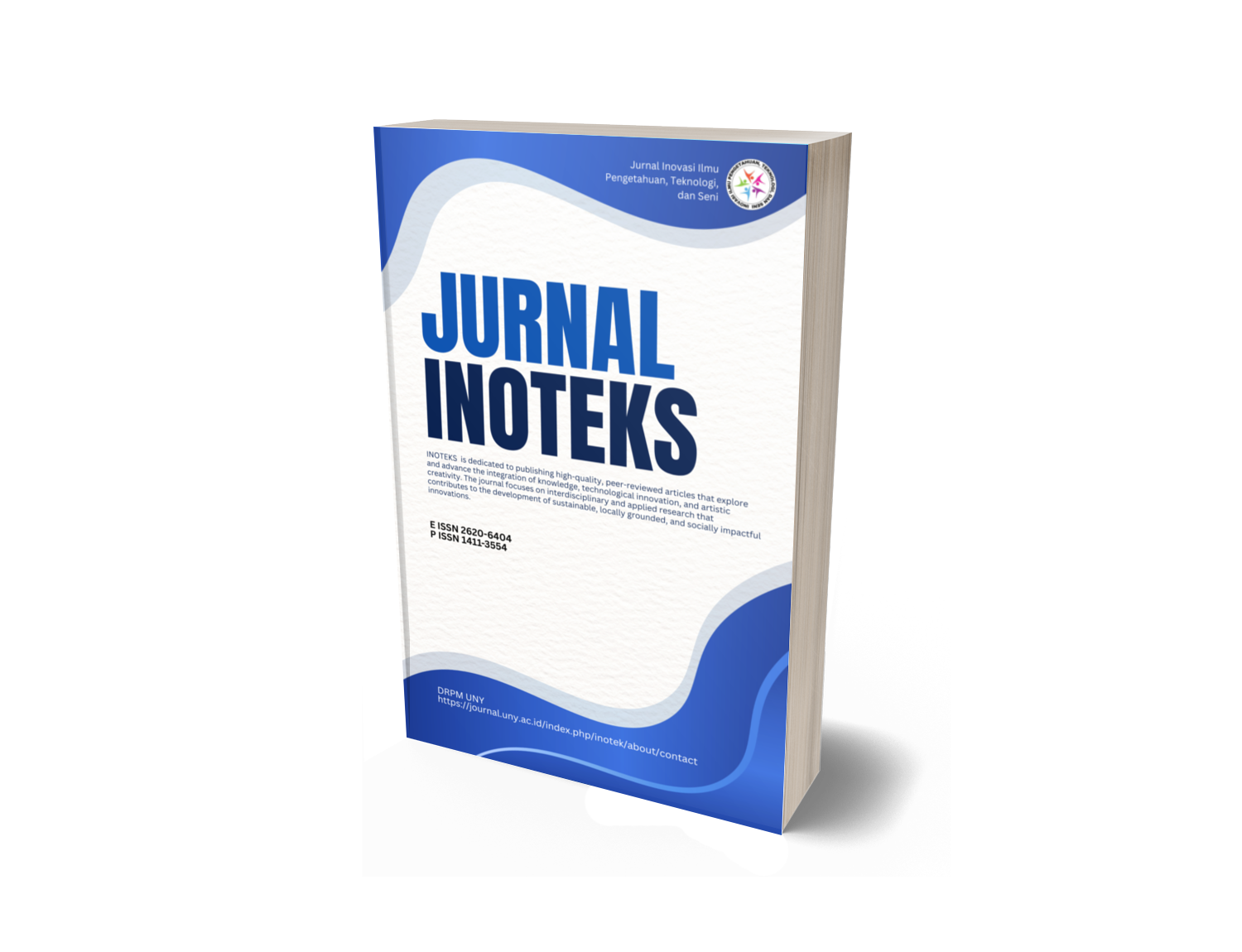Potensi pemanfaatan limbah sistem integrasi tanaman-ternak di Pesantren Tradisional pedesaan (The use-potential of plant-animal system wastes on Traditional Islamic boarding school at rural area)
DOI:
https://doi.org/10.21831/ino.v27i1.11432Keywords:
Cow dung, Biogas, Anaerobic bioreactor, MethaneAbstract
References
Aprizal, D., 2001, Evaluasi Pengelolaan Limbah Di Industri Tapioka Rakyat (ITTARA) Terpadu (Studi Kasus di PD. Semangat Jaya Kecamatan Negeri Katon, Kabupaten Pesawaran), Tesis Program Studi Magister Teknologi Agroindustri, Jurusan Teknologi Hasil Pertanian, Fakultas Pertanian, Universitas Lampung, Bandar Lampung
Bamualim, A., dkk, 2008, Sistim Usaha Tani Tanaman-Ternak hal 19-33 Dalam Sistim Integrasi Tanaman Pangan-Ternak Bebas Limbah, Pusat Penelitian dan Pengembangan Tanaman Pangan, Bogor
Firdaus, F., 2005, Studi Pendahuluan Pembuatan Biogas Dari Sampah Buah-Buahan, Skripsi Jurusan Kimia, Fakultas Matematika dan Ilmu Pengetahuan Alam, Universitas Lampung, Bandarlampung
Hardoyo, dkk, 2014, Panduan Praktis Membuat Biogas Portable Skaqla Rumah Tangga Dan Industri, Andi Publisher, Jogyakarta.
Haryanto Budi,2009, Inovasi Teknologi Pakan Ternak Dalam Sistem Integrasi Tanaman-Ternak Bebas Limbah Mendukung Upaya Peningkatan Produksi Daging, Pengembangan Inovasi Pertanian 1(3), 2009, 163-176
Haryati, Tuti, 2006, Biogas, Limbah Peternakan Yang Menjadi Sumber Energi Alternatif, Journal Wartazoa, vol 16 no 4.
Hasanudin, U., 2006, Present Status And Possibility Of Biomass Effective Use In Indonesia, Proceeding Seminar Sustainable Society Achievement by Biomass Effective Use, EBARA Hatakeyama Memorial Fund, January 24-25, 2006, Jakarta
Hendroko, R.,mddk., 2008, Sinergi Bio-metana Berbahan Baku Limbah Jatrofa carcass dan Pangan.
Jenie, B. S. L. dan W.P. Rahayu, 1983, Penanganan Limbah Industri Pangan, Kanisius, Yogyakarta
Priyanti, A., dkk, 2007, Model Ekonomi Rumah Tangga Petani Pada Sistim Integrasi Tanaman-Ternak : Konsepsi dan Studi Empiris, Watazoa, vol 17 No 2, 2007
Rosadi Dadang, dkk, 2012, Kerangka Acuan Pembangunan Instalasi Biogas Dari Air Limbah Domestik di Pondok Pesantren Al Ashriyah Nurul Iman, Bogor
Tjeppy D. Soedjana, 2007, Sistem Usaha Tani Terintegrasi Tanaman-Ternak Sebagai Respons Petani Terhadap Faktor Resiko, Jurnal Litbang Pertanian 26(2), 2007
Downloads
Published
How to Cite
Issue
Section
Citation Check
License
- Authors certify that the work reported here has not been published before and contains no materials the publication of which would violate any copyright or other personal or proprietary right of any person or entity.
- Authors transfer or license the copyright of publishing to Jurnal Civics: Media Kajian Kewarganegaraan to publish the article in any media format, to share, to disseminate, to index, and to maximize the impact of the article in any databases.
- Authors hereby agree to transfer a copyright for publishing to Jurnal Civics: Media Kajian Kewarganegaraanas a Publisher of the manuscript.
- Authors reserve the following:
- all proprietary rights other than copyright such as patent rights;
- the right to use all or part of this article in future works of our own such as in books and lectures;
- use for presentation in a meeting or conference and distributing copies to attendees;
- use for internal training by author's company;
- distribution to colleagues for their research use;
- use in a subsequent compilation of the author's works;
- inclusion in a thesis or dissertation;
- reuse of portions or extracts from the article in other works (with full acknowledgement of final article);
- preparation of derivative works (other than commercial purposes) (with full acknowledgement of final article); and
- voluntary posting on open web sites operated by author or author's institution for scholarly purposes, but it should follow the open access license of Creative Common CC BY-NC-SA License.








